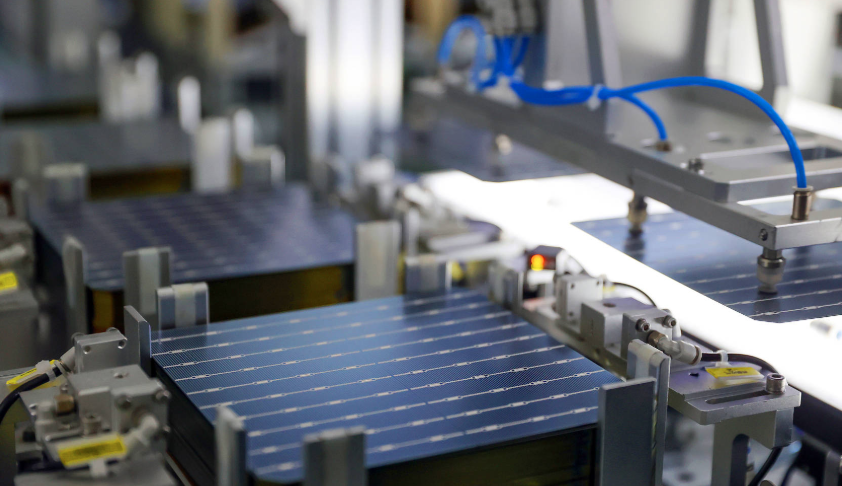
Last week, the latest article from the Silicon Industry Branch of the China Nonferrous Metals Industry Association showed a significant drop in silicon wafer prices. M10 monocrystalline silicon wafer (182mm/150 μ m) The circumferential ratio decreased by 16.4%, while the G12 monocrystalline silicon wafer (210mm/150 μ m) The weekly decrease also reached 9%. TCL Central, one of the silicon wafer duopoly, also announced its latest quotation on the 11th. Compared to the quotation on April 6th, the price reduction of all models of silicon wafers is over 20%, with some models having a price reduction of nearly 22%. The Silicon Industry Branch stated that the significant decline in silicon wafer prices is mainly due to two reasons. Firstly, the price drop this week spans two weeks, so the decline is slightly exaggerated, but in reality, it has undergone two rounds of phased price adjustments; The second is to channel the space for raw material price reduction and continuously release profits downstream. The industry expects that the price of silicon wafers will rapidly decline again, which is conducive to the release of profits downstream. The silicon wafer process itself will also undergo drastic changes, and the trend of market share tilting towards top players in the future will be more obvious. Industry insiders have learned that in the early stage of the silicon wafer process, driven by high profits, the operating rate of top manufacturers is at a high level of around 90%. The recent significant drop in prices also indicates ample profit margin in the silicon wafer segment.
At present, the inventory of the silicon wafer industry is around 1.1 billion pieces, and inventory pressure directly leads to increased competitiveness among enterprises, leading to similar price wars. It should be noted that due to the current good profit level of silicon wafers, the operating rate of silicon wafer factories has been consistently high. According to the Silicon Industry Branch, the operating rates of the two first tier enterprises remained at 100% and 90% this week. The operating rate of integrated enterprises remains between 80% -100%, while the operating rate of other enterprises remains between 90% -100%. The price war in the silicon wafer process may become even more intense as both the intensive price reduction and inventory reduction are carried out while maintaining high production rates. However, despite the continuous decline in upstream silicon material costs, there is still a certain profit margin for silicon wafers.
From January to April this year, the domestic production of polycrystalline silicon reached a total of 415000 tons, a year-on-year increase of 91.2%. According to the Silicon Industry Branch, due to a decrease in short-term demand this week, the price of silicon materials has expanded and decreased, with a current trend of silicon materials falling below 150000 yuan/ton. However, it is difficult for the industry to have a unified view on the price prediction of silicon materials: if the production cost line of 50-60000 yuan/ton is used as a reference, polycrystalline silicon is likely to continue to fall below 100000 yuan/ton in the second half of the year. However, some analysts also suggest that future price trends may be variable due to price boosting actions such as production cuts and destocking by leading enterprises.
02 | Further stimulating downstream installation demand. In the industry's view, this round of decline in raw material prices will inevitably continue to spread downstream, releasing profits to the downstream. Especially this year, photovoltaic installation has been dubbed as "high growth" by the market. The price reduction of silicon wafers will effectively improve the cost pressure on downstream batteries and components, further stimulating terminal installation demand. Guohai Securities also stated in a research report that from the component side, with the decline in silicon material prices, the average price of mainstream 182/210 products has dropped from 1.98 yuan/W in November 2022 to 1.72/1.73 yuan/W. The decrease in component prices will drive down the cost of photovoltaic systems, significantly increase the yield of photovoltaic power generation projects, and thus stimulate more construction investment. The institution predicts that the global photovoltaic market will maintain a high growth rate in 2023, with a total installed capacity expected to exceed 350GW, and silicon wafers as the main intermediate material will also experience rapid growth. In fact, significant differentiation can also occur in the silicon wafer process. Huachuang Securities believes that to stimulate downstream demand and accelerate industry clearance, the current silicon wafer production capacity is relatively loose, leading enterprises have obvious cost advantages, and their raw material supply capacity is stronger. With the decline of silicon wafer prices, outdated production capacity may accelerate clearance and reshape the industry pattern.
03 | Jingtai's viewpoint: As the upstream raw material silicon material prices decline, the impact of raw material procurement on the cost side of silicon wafers will be weakened, and the importance of manufacturing technology will gradually become prominent. When the price of silicon material is high, silicon material accounts for the majority of the overall cost of silicon wafers, so the specific price and time for raw material procurement
The grasp of rhythm, judgment of future trends, and inventory management have a significant impact on the profitability of silicon wafer enterprises, while the impact of non silicon costs determined by factors such as production technology, process, and management level is not easily reflected. According to institutional calculations, when the price of silicon material is 300/200 yuan/kg, the cost of mainstream 182 model silicon wafers is about 5.69/4.10 yuan/piece, with silicon costs accounting for 84/78% respectively and non silicon costs only 0.9 yuan/piece. When the cost of silicon materials decreases to below 80 yuan/kg, the proportion of non silicon costs will increase to over 40%, and the manufacturing capabilities and scale competitive advantages of excellent silicon wafer manufacturers will become prominent, widening the gap with the general level of the industry.





